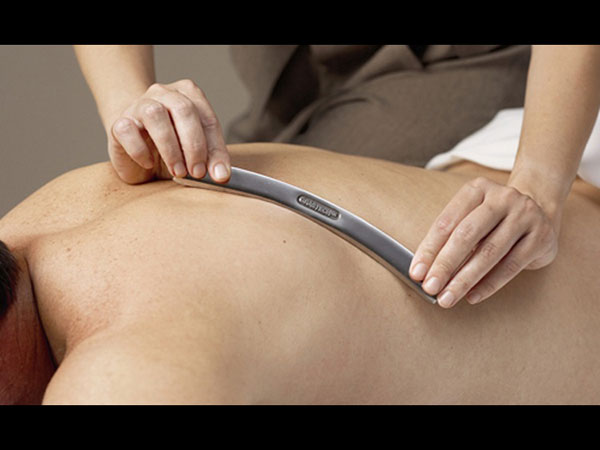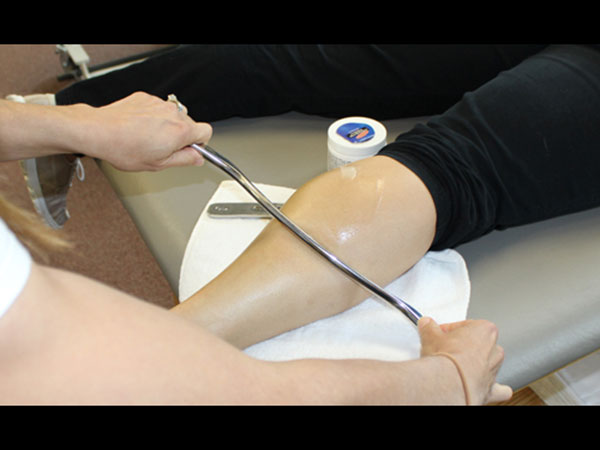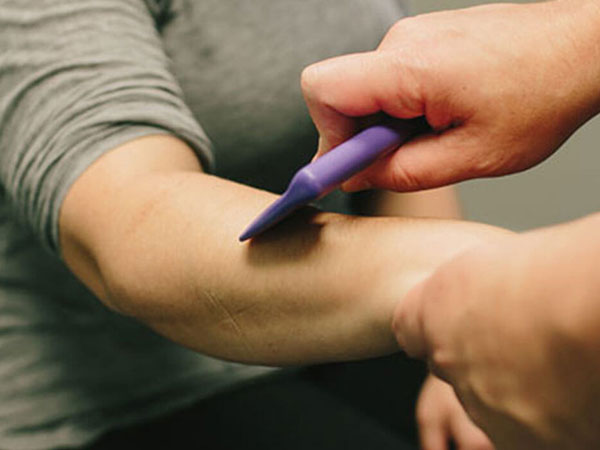Just In
- 3 hrs ago

- 7 hrs ago

- 8 hrs ago

- 13 hrs ago

Don't Miss
- News
 Lok Sabha Election 2024: Polling Underway For 2 LS Seats In Meghalaya
Lok Sabha Election 2024: Polling Underway For 2 LS Seats In Meghalaya - Technology
 Nothing Phone 2 Receives NothingOS 2.5.5 Update with ChatGPT Integration and More
Nothing Phone 2 Receives NothingOS 2.5.5 Update with ChatGPT Integration and More - Movies
 Maidaan Box Office Day 9 Prediction: Ajay Devgn’s Football Saga Inch Towards 30Cr Ahead Of 2nd Weekend
Maidaan Box Office Day 9 Prediction: Ajay Devgn’s Football Saga Inch Towards 30Cr Ahead Of 2nd Weekend - Finance
 Trade Setup: Nifty Slides Below 22,000 Mark; Global Markets Plunge On Reports Of Explosions In Iran
Trade Setup: Nifty Slides Below 22,000 Mark; Global Markets Plunge On Reports Of Explosions In Iran - Sports
 LSG vs CSK IPL 2024: Ekana Stadium Pitch Report, Lucknow Weather Forecast & Live Streaming Info
LSG vs CSK IPL 2024: Ekana Stadium Pitch Report, Lucknow Weather Forecast & Live Streaming Info - Automobiles
 Aprilia RS 457 Accessories: A Detailed Look At The Prices
Aprilia RS 457 Accessories: A Detailed Look At The Prices - Education
 Karnataka SSLC Result 2024 Soon, Know How to Check Through Website, SMS and Digilocker
Karnataka SSLC Result 2024 Soon, Know How to Check Through Website, SMS and Digilocker - Travel
Telangana's Waterfall: A Serene Escape Into Nature's Marvels
How Graston Technique Can Be Used For Pain Relief
Overuse injuries of muscles and joints can get really annoying. We all know and have experienced injuries that just nag on and on, and we assume that they would get better on its own. These pains could be a result of working out too much in the gym or performing a particular task over and over again [1] . This is where a non-invasive treatment known as Graston technique can be quite beneficial. This technique addresses the pain issues with the use of an instrument that performs soft tissue mobilization and allows the therapist to detect and treat scar tissue [2] .
Injuries do heal with time on its own, however, the healing might not be proper causing scar tissue to build up. When there is scar tissue in the muscle, it cannot function properly. The pain is felt due to the muscle's limited range of motion. Your injuries could multiply in case the root cause of the pain is not addressed [3] .
Read on to know more about how the Graston technique can help you relieve pain.
The Graston Technique
The Graston technique is a patented form of manual therapy. It uses stainless steel tools to release adhesions in the muscles. It also addresses scar tissue and tight knots called trigger points. Trained and skilled professionals use tools to identify knots by running the tool over the patient's skin. The tool is then used to break up and release the adhesions in order to reduce pain while increasing range of motion and overall functionality [4] .

Graston technique is also referred to as instrument-assisted soft tissue mobilization (IASTM). This technique can be used to treat all forms of soft tissue conditions (chronic, acute or post-surgical) [5] . The theory followed in this technique is that microtrauma can be introduced with a tool into the area of excessive scarring. This would result in an inflammatory response.
A research study published in the Journal of Exercise Rehabilitation says that the inflammation is capable of restarting the healing process by removing the scar tissue and releasing adhesions. It is also said that the technique facilitates an increase in the blood and nutrient supply to the injured area and migration of fibroblasts [6] .
Although it varies from patient to patient, the Graston technique involves one or two treatment sessions per week ranging for about four to five weeks. However, the time duration and number of sessions could vary in case of chronic conditions. Graston technique includes brief warm-up exercises. The treatment procedure is itself followed by stretching and strengthening activities.
What Can The Graston Technique Treat
Graston technique has been clinically proven to treat the following [7] :
- Fibromyalgia
- Cervical sprain
- Carpal tunnel syndrome
- Achilles tendinosis/tendonitis
- Costochondritis
- Hip flexor strain
- Tennis elbow
- Lumbar sprain (back pain)
- Golfer's elbow
- Plantar fasciitis (foot pain)
- Scar tissue
- Shin splints
- Trigger finger
- Knee pain
- Posterior tibialis tendonitis
- Rotator cuff tendinosis (shoulder pain)
- Post-mastectomy and caesarean scarring

Health Benefits Of Graston Technique
1. A decrease in treatment and recovery time
Clinically, the Graston technique shows a drastic reduction in treatment and recovery time in people who stick with the treatment until relief is found [8] . Unlike attempting to numb your pain, this technique primarily focuses on addressing the root problem of the cause. You should start seeing the result within 6-12 treatment sessions. If not, then maybe it's not something that is likely to work for your body.
2. Reduction in over-the-counter painkiller usage
As the root problem of the pain is being addressed by this technique, it can greatly eliminate the need for over-the-counter medicines. Taking painkillers is never the solution as they only provide temporary relief and come with loads of side effects. Graston technique is, therefore, the ideal non-invasive technique to reduce the pain naturally. Studies show that this technique increases the blood flow to the manipulated areas and hence allows the injury site to get rid of toxins and dead cells (eventually promoting healing) [9] .
3. Improvement in chronic conditions
Graston technique is known to work effectively for chronic conditions by breaking up debilitating soft tissue injuries that cause chronic movement issues and pain [10] .
A study published in the Journal of Sport Rehabilitation proved that people with a history of chronic ankle instability showed great improvement in terms of the range of motion, pain improvement and dynamic postural control when given both dynamic-balance-training (DBT) along with the Graston technique [11] .

4. Trigger finger relief
Trigger finger [12] is a condition wherein the fingers or thumb gets locked when bent. It is called trigger thumb when it occurs in the thumb. It can be quite painful and usually occurs with repeated or forceful use of a finger, rheumatoid arthritis, diabetes or gout.
A study published in The Journal of the Canadian Chiropractic Association mentioned that when patients undergo Graston technique along with active release technique (ART) instead of the usual steroid injections or surgery [13] , there is a significant improvement in how easily and quickly patients are relieved of their pain and disability.
5. Hamstring and low back pain relief
A study published in the Journal of Physical Therapy Science analyzed the effect of the Graston technique on hamstring extensibility and pain intensity in people with nonspecific low back pain. When compared to people with the same issue who were studied under a static stretching group, the people who underwent the Graston technique showed significant improvement in hamstring extensibility [14] .
How To Use The Graston Technique
Graston technique makes use of stainless steel instruments that the specialist run over the patient's body to catch on fibrotic tissues. It is immediately able to identify areas where there are restrictions. When the tissue dysfunction has been identified, the instrument is then used to break up the scar tissue so that it can be absorbed by the body [15] .
The procedure followed in this technique involves the breakage of problematic adhesions (done by breaking down the collagen cross-links that have been formed) followed by realigning the cross-links with proper stretching and strengthening [16] .
Many a time, practitioners believe in combining Graston technique with other forms of alternative healing method such as acupuncture, dry needling and active release technique.

Active release technique (ART): Most often, the Graston technique is combined with ART. Being a non-invasive process, ART locates and breaks down the scar tissue and adhesions that are present in case of soft-tissue injuries [17] . ART practitioners use their hands instead of tools. Abnormal tissues are treated by combining precisely directed tension with specific patient movements.
Dry needling: This involves a very thin needle that is pushed through the skin. This is done to stimulate a trigger point. Dry needling can release tight muscle bands [18] .
Acupuncture: This involves needles and instrument-assisted manual therapy. This follows a holistic approach wherein trained practitioners stimulate specific points on the body through the insertion of needles into the skin [19] .
Precautions
You should only get this treatment from a certified professional. You will be in safe hands when you get the procedure done by trained practitioners. The only common side effect is a minor discomfort during the session and some bruising afterwards. There are chances that you might be sore for sometime after the session.
Speak up in case you feel extreme pain during the session as the Graston technique does not involve severe pain nor does it cause excessive bruising. A good Graston technique practitioner would surely adjust the treatment intensity depending on your tolerance level so as to minimize discomfort.
- [1] Renström, P., & Johnson, R. J. (1985). Overuse injuries in sports.Sports Medicine,2(5), 316-333.
- [2] Lee, J. H., Lee, D. K., & Oh, J. S. (2016). The effect of Graston technique on the pain and range of motion in patients with chronic low back pain.Journal of physical therapy science,28(6), 1852–1855.
- [3] Schiavone Panni, A., Cerciello, S., Vasso, M., & Tartarone, M. (2009). Stiffness in total knee arthroplasty.Journal of orthopaedics and traumatology : official journal of the Italian Society of Orthopaedics and Traumatology,10(3), 111–118.
- [4] Crothers, A. L., French, S. D., Hebert, J. J., & Walker, B. F. (2016). Spinal manipulative therapy, Graston technique® and placebo for non-specific thoracic spine pain: a randomised controlled trial.Chiropractic & manual therapies,24, 16.
- [5] Cheatham, S. W., Lee, M., Cain, M., & Baker, R. (2016). The efficacy of instrument assisted soft tissue mobilization: a systematic review.The Journal of the Canadian Chiropractic Association,60(3), 200–211.
- [6] Lim, X., Tateya, I., Tateya, T., Muñoz-Del-Río, A., & Bless, D. M. (2006). Immediate inflammatory response and scar formation in wounded vocal folds.Annals of Otology, Rhinology & Laryngology,115(12), 921-929.
- [7] Kim, J., Sung, D. J., & Lee, J. (2017). Therapeutic effectiveness of instrument-assisted soft tissue mobilization for soft tissue injury: mechanisms and practical application.Journal of exercise rehabilitation,13(1), 12–22.
- [8] Moon, J. H., Jung, J. H., Won, Y. S., & Cho, H. Y. (2017). Immediate effects of Graston Technique on hamstring muscle extensibility and pain intensity in patients with nonspecific low back pain.Journal of physical therapy science,29(2), 224–227.
- [9] Papa J. A. (2012). Two cases of work-related lateral epicondylopathy treated with Graston Technique® and conservative rehabilitation.The Journal of the Canadian Chiropractic Association,56(3), 192–200.
- [10] Lee, J. H., Lee, D. K., & Oh, J. S. (2016). The effect of Graston technique on the pain and range of motion in patients with chronic low back pain.Journal of physical therapy science,28(6), 1852-1855.
- [11] Schaefer, J. L., & Sandrey, M. A. (2012). Effects of a 4-week dynamic-balance-training program supplemented with Graston instrument-assisted soft-tissue mobilization for chronic ankle instability.Journal of sport rehabilitation,21(4), 313-326.
- [12] Makkouk, A. H., Oetgen, M. E., Swigart, C. R., & Dodds, S. D. (2007). Trigger finger: etiology, evaluation, and treatment.Current reviews in musculoskeletal medicine,1(2), 92–96.
- [13] Howitt, S., Wong, J., & Zabukovec, S. (2006). The conservative treatment of Trigger thumb using Graston Techniques and Active Release Techniques.The Journal of the Canadian Chiropractic Association,50(4), 249–254.
- [14] Moon, J. H., Jung, J. H., Won, Y. S., & Cho, H. Y. (2017). Immediate effects of Graston Technique on hamstring muscle extensibility and pain intensity in patients with nonspecific low back pain.Journal of physical therapy science,29(2), 224-227.
- [15] Laudner, K., Compton, B. D., McLoda, T. A., & Walters, C. M. (2014). Acute effects of instrument assisted soft tissue mobilization for improving posterior shoulder range of motion in collegiate baseball players.International journal of sports physical therapy,9(1), 1–7.
- [16] Kim, J., Sung, D. J., & Lee, J. (2017). Therapeutic effectiveness of instrument-assisted soft tissue mobilization for soft tissue injury: mechanisms and practical application.Journal of exercise rehabilitation,13(1), 12–22.
- [17] Miners, A. L., & Bougie, T. L. (2011). Chronic Achilles tendinopathy: a case study of treatment incorporating active and passive tissue warm-up, Graston Technique®, ART®, eccentric exercise, and cryotherapy.The Journal of the Canadian Chiropractic Association,55(4), 269.
- [18] Shariat, A., Noormohammadpour, P., Memari, A. H., Ansari, N. N., Cleland, J. A., & Kordi, R. (2018). Acute effects of one session dry needling on a chronic golfer's elbow disability.Journal of exercise rehabilitation,14(1), 138–142.
- [19] Crothers, A. L., French, S. D., Hebert, J. J., & Walker, B. F. (2016). Spinal manipulative therapy, Graston technique® and placebo for non-specific thoracic spine pain: a randomised controlled trial.Chiropractic & manual therapies,24, 16.
-
 wellnessWhat Kind Of Heart Pain Is Serious? How Do You Know If Chest Pain Is Heart Pain?
wellnessWhat Kind Of Heart Pain Is Serious? How Do You Know If Chest Pain Is Heart Pain? -
 healthWhy Does A Breakup Hurt? Is The Physical Pain Real Or Just In Your Head?
healthWhy Does A Breakup Hurt? Is The Physical Pain Real Or Just In Your Head? -
 healthHow To Get A Slipped Disc Back In Place?
healthHow To Get A Slipped Disc Back In Place? -
 health4 Common Myths About Arthritis Debunked!
health4 Common Myths About Arthritis Debunked! -
 healthYour Kitchen Holds the Secrets to Winter Knee Pain Relief
healthYour Kitchen Holds the Secrets to Winter Knee Pain Relief -
 wellnessDid You Know Your Own Blood Can Be Used For Pain Relief?
wellnessDid You Know Your Own Blood Can Be Used For Pain Relief? -
 wellness5 Bizarre Home Remedies For Pain Relief: Read It To Believe It!
wellness5 Bizarre Home Remedies For Pain Relief: Read It To Believe It! -
 healthHow To Dry Rose Petals To Make Rose Tea At Home? Best For Weight Loss, Menstrual Cramps And More
healthHow To Dry Rose Petals To Make Rose Tea At Home? Best For Weight Loss, Menstrual Cramps And More -
 healthSuffering from Ear Pain? Uncover Its Possible Reasons and Notifications!
healthSuffering from Ear Pain? Uncover Its Possible Reasons and Notifications! -
 pregnancy parentingWhy Some Women Don't Feel Pain During Childbirth: Is It Normal?
pregnancy parentingWhy Some Women Don't Feel Pain During Childbirth: Is It Normal? -
 healthDo You Take Painkillers For Every Single Pain? You May Be At Risk Of These Side Effects
healthDo You Take Painkillers For Every Single Pain? You May Be At Risk Of These Side Effects -
 healthGet Back On Your Feet with These 5 Low Impact Exercises After A Leg Injury!
healthGet Back On Your Feet with These 5 Low Impact Exercises After A Leg Injury!


 Click it and Unblock the Notifications
Click it and Unblock the Notifications



